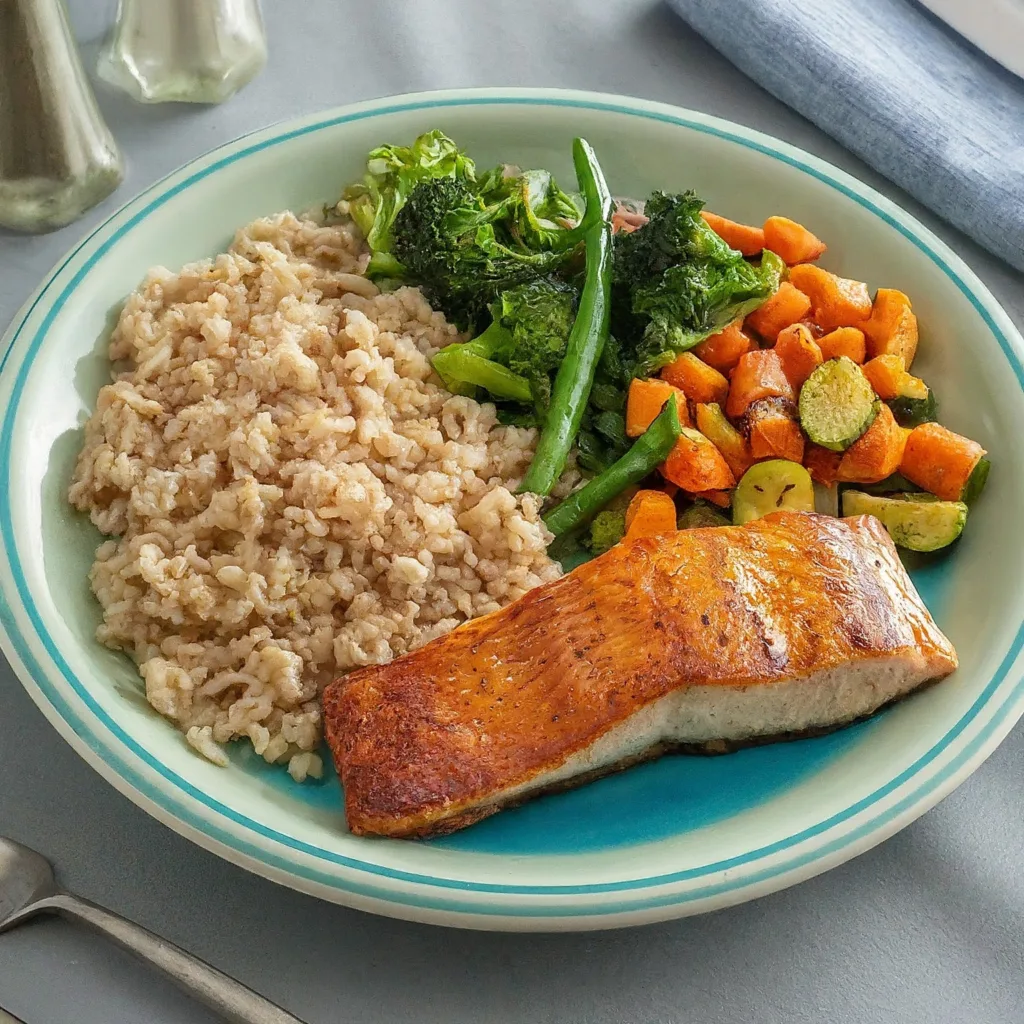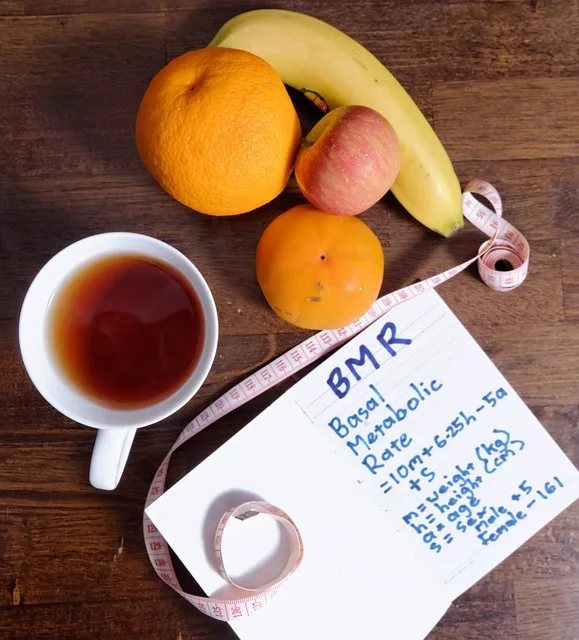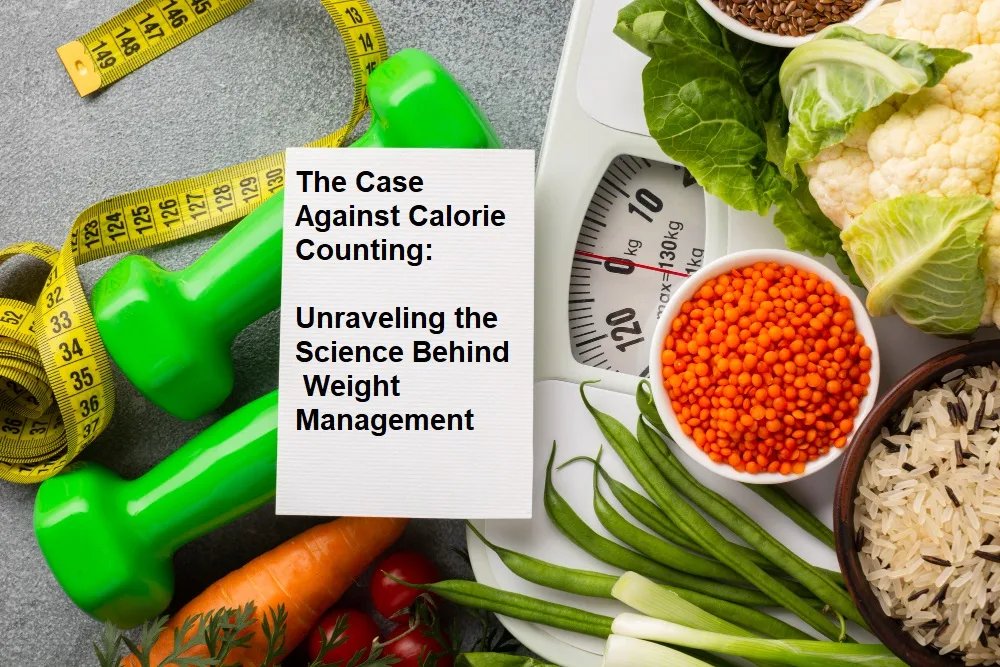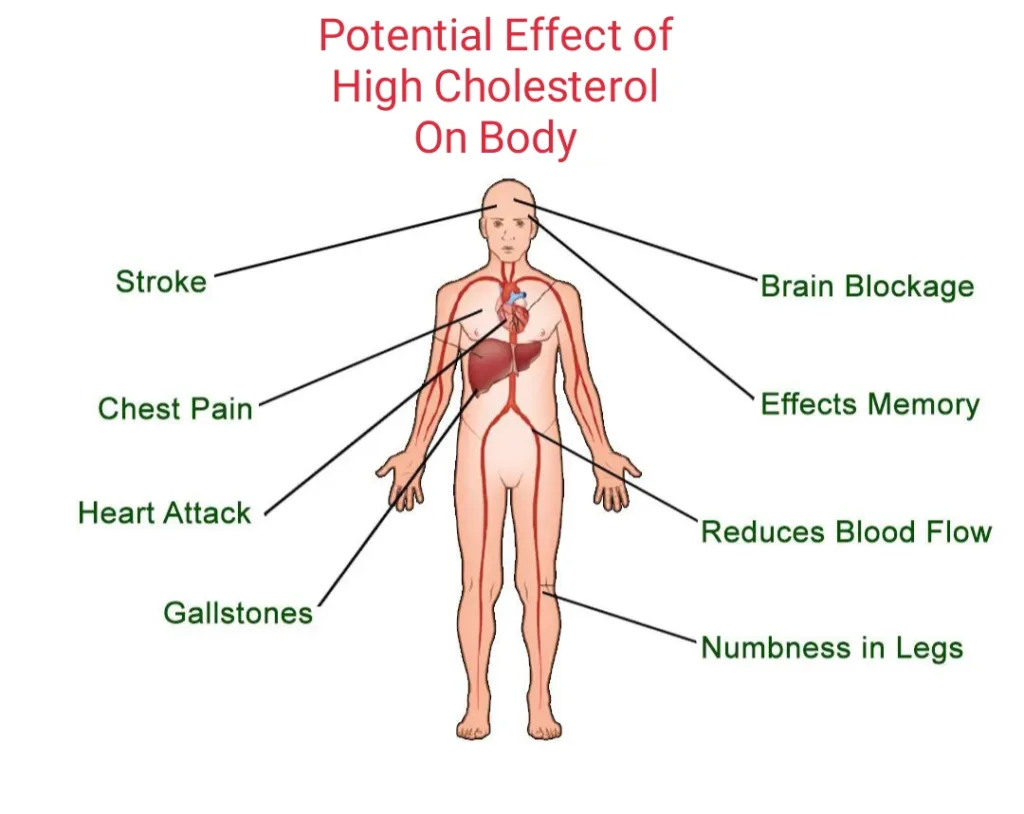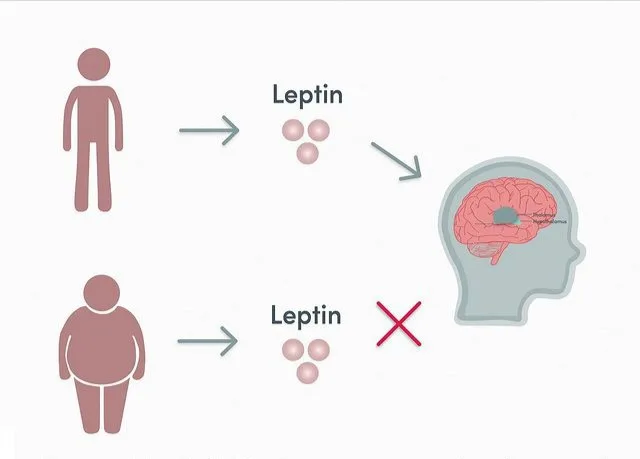As we delve into the realm of fitness and wellness, it’s crucial to understand the fundamental elements that govern calorie burn. In this comprehensive guide, we will uncover the three essential pillars of calorie burn, shedding light on the intricate mechanisms that drive this vital aspect of physical health and well-being.
In This Article
What is Metabolism?
Metabolism, often described as the body’s calorie-burning rate, refers to the complex set of biochemical processes that occur within living organisms to maintain life. It involves the conversion of nutrients from the food we consume into energy, as well as the regulation of various physiological functions necessary for the survival and growth of cells.
There are two primary aspects of metabolism:
Catabolism: This phase involves breaking down complex molecules into simpler ones, releasing energy in the process. For example, during digestion, large food molecules such as carbohydrates, proteins, and fats are broken down into smaller units like glucose, amino acids, and fatty acids.
Anabolism: In this phase, smaller molecules are combined to create larger, more complex molecules, requiring energy input. Anabolic processes are responsible for building and repairing tissues, such as the synthesis of proteins from amino acids.
Metabolism is crucial for several key functions in the body, including:
Energy Production: The primary role of metabolism is to generate energy in the form of adenosine triphosphate (ATP), which is utilized by cells for various activities.
Maintenance of Cellular Structure: Metabolism is involved in the synthesis and repair of cellular components, such as proteins, lipids, and nucleic acids.
Elimination of Waste Products: Metabolism helps in the elimination of waste products produced during cellular activities, preventing the accumulation of harmful substances.
Regulation of Hormones: Metabolism plays a role in the production and regulation of hormones that control various physiological processes, including growth, development, and reproduction.
Metabolism is often described in terms of basal metabolic rate (BMR), which is the amount of energy expended by the body at rest to maintain basic physiological functions such as breathing, circulation, and cell production. Factors such as age, gender, body composition, and genetics can influence an individual’s metabolic rate.
Understanding metabolism is essential for managing weight, as a person’s metabolic rate can impact how efficiently they burn calories. Factors like regular physical activity, a balanced diet, and adequate sleep can influence metabolism positively. Conversely, certain medical conditions, aging, and hormonal imbalances can affect metabolism negatively.
The Three Pillars of Calorie Burn
The concept, the pillars of calorie burn, encompasses three fundamental factors or elements pivotal in the expenditure of calories within the human body. Calorie burn denotes the essential measure of energy expended by the body during a myriad of functions and activities.
The following is the breakdown of what the three pillars could potentially represent:
1. The Thermic Effect of Eating
Between 10 and 30 percent of your daily calorie burn stems from the thermic effect of eating. This intriguing phenomenon reveals that the simple act of digesting food contributes significantly to energy expenditure. 1 2
Notably, not all calories are created equal—your body expends more energy digesting protein compared to fats and carbohydrates. This insight forms the foundation of dietary strategies aimed at transforming your body into an efficient fat-burning machine.
2. Exercise and Movement
A notable portion, 10 to 15 percent, of your daily calorie burn is attributed to physical activity. Whether it’s lifting weights, sprinting for the bus, or even fidgeting, movement engages your muscles and accelerates calorie consumption. 3 4
While acknowledging the undeniable importance of exercise, it’s essential to grasp that the calories burned during workout sessions constitute only a fraction of the broader metabolic panorama.
3. Basal Metabolism: The Silent Dynamo
The cornerstone of metabolism lies in basal metabolism, representing the calories expended during rest. Astonishingly, 60 to 80 percent of daily calorie burn occurs while you’re seemingly inactive—sleeping, watching TV, or enduring corporate presentations. 5 6 7
This underlines the perpetual motion within your body: the constant beating of the heart, rhythmic breathing, and cellular activities during moments of stillness.
Redefining the Significance of Exercise
While exercise plays a pivotal role in a holistic health regimen, its impact on daily calorie burn is often overemphasized. Contrary to popular belief, the calories burned during a workout are not the primary focus of an effective fitness plan. Instead, the objective is to manipulate basal metabolism, transforming periods of inactivity into potent fat-burning intervals. This paradigm shift challenges conventional thinking and directs attention to the 23.5 hours beyond the gym.
Beyond Calorie Burn
In the labyrinth of fitness ideologies, the conventional emphasis on the immediate caloric output of exercise typically overshadows a more profound reality. While exercise unquestionably contributes to overall health, its transformative power extends far beyond the simplistic calculus of calories burned during a workout.
Contrary to prevailing perceptions, the true essence of an effective fitness plan lies not merely in the calories shed during a gym session, but in the strategic orchestration of metabolic processes that linger long after the last treadmill step. It is a paradigm shift, urging us to recalibrate our understanding of exercise’s role in the broader context of metabolic dynamics.
Moving Beyond the Caloric Treadmill
In the traditional narrative, the measure of a successful workout is often reduced to the immediate energy expenditure—how many calories were torched during that intense hour of cardio or weightlifting. However, this narrow focus overlooks the intricate dance of physiological adaptations that continue well into post-exercise recovery and, more importantly, during periods of rest.
The recalibration of our perspective involves acknowledging that the real goal is not just to burn calories while actively exercising, but to influence basal metabolism. This internal engine, responsible for the lion’s share (60 to 80 percent) of daily calorie burn, operates relentlessly, even when the body seems at rest. Therefore, exercise becomes a catalyst, not just for the temporary caloric torching but for the enduring impact on the body’s metabolic rhythm.
Transformative Inactivity: Leveraging Basal Metabolism
The key to this paradigm shift lies in recognizing that exercise isn’t confined to the confines of a gym or a designated workout hour. Instead, it extends its influence far beyond, seeping into the 23.5 hours when one is not actively engaged in deliberate physical activity. It’s during these seemingly passive moments—while sleeping, working, or engaging in sedentary pursuits—that the magic of basal metabolism unfolds.
Strategic exercise interventions are designed not merely to boost immediate calorie burn, but to trigger adaptations in the body that optimize its baseline metabolic rate. This, in turn, transforms periods of inactivity into potent fat-burning intervals. The body becomes an efficient, calorie-incinerating machine, responding not just to the exertion of a workout but to the sustained impact on its internal workings.
A Holistic Approach to Fitness
This redefined perspective on exercise aligns with a holistic approach to health—one that extends beyond the treadmill or weight room, permeating every facet of daily life. The synergy between structured workouts and the subtle, continuous influence on basal metabolism forms the cornerstone of a truly effective fitness regimen.
As we liberate ourselves from the shackles of conventional calorie-centric thinking, we embark on a journey that recognizes exercise as a catalyst for long-term metabolic efficiency. It’s a nuanced understanding that empowers individuals to appreciate the transformative potential of every movement, every workout, and every moment of rest, all contributing to the symphony of metabolic health that plays on, well beyond the walls of the gym.
The Diet-Exercise Synergy
Your diet becomes a catalyst in this metabolic transformation, capitalizing on the thermic effect of eating. Emphasizing lean, healthy proteins amplifies calorie burn during digestion, aligning with the overarching goal of converting the body into a fat-frying dynamo. The synergy between a thoughtfully crafted diet and strategic exercise regimens aims to optimize overall metabolic efficiency.
1. Diet as the Catalyst
Your diet serves as the catalyst for this metabolic transformation, wielding a potent influence on the body’s intricate energy processes. One key player in this metabolic orchestra is the thermic effect of eating, a phenomenon where the act of digestion itself expends calories. By strategically choosing the right nutrients, particularly emphasizing lean and healthy proteins, you amplify this thermic effect.
The decision to prioritize proteins in your diet becomes pivotal, as they demand more energy for digestion compared to fats and carbohydrates. This strategic dietary choice aligns seamlessly with the overarching objective—transforming your body into a formidable fat-frying dynamo. The metabolic furnace is stoked not just by the quantity of calories consumed but by the quality and composition of the foods that enter your system.
2. Emphasizing Lean Proteins
The emphasis on lean, healthy proteins is not a mere dietary preference; it’s a deliberate strategy to optimize calorie burn during digestion. For every 100 calories consumed, proteins demand a higher energy expenditure (approximately 25 calories) compared to fats and carbohydrates (ranging from 10 to 15 calories). This nutritional nuance becomes the cornerstone of a diet designed not just for satiety but for metabolic prowess.
Lean proteins, found in sources like poultry, fish, legumes, and tofu, become the building blocks of this strategic dietary approach. They not only satiate hunger but also engage your body in a metabolic ballet, where the digestion process itself becomes a calorie-consuming performance. It’s a mindful selection that transcends the simple act of eating, becoming a deliberate step in sculpting a metabolism finely tuned for efficiency.
3. The Synergy Unleashed
The true magic unfolds when your diet’s calculated precision harmonizes with a strategically designed exercise regimen. This is where the symphony of metabolic transformation reaches its crescendo. The synergy between these two pillars of health amplifies their individual impacts, creating a multiplier effect on overall metabolic efficiency.
As exercise stimulates the body, your thoughtfully crafted diet becomes the fuel that propels these physiological processes forward. It’s not a dichotomy of diet versus exercise but a seamless integration, each element enhancing the other. The result is a metabolic orchestra playing in perfect harmony, where the body efficiently burns calories, both at rest and during physical exertion.
4. Beyond Caloric Counting
This diet-exercise synergy transcends the limitations of traditional caloric counting. It’s a holistic approach that recognizes the intricate relationships within the body’s metabolic machinery. The focus shifts from a quantitative obsession with calories to a qualitative appreciation of how specific nutrients and movements impact the body’s internal workings.
In embracing this synergistic approach, individuals embark on a transformative journey—a journey where the careful selection of foods complements the intentional movements of exercise. Together, they create a metabolic symphony that resonates not only in the immediate aftermath of a meal or workout but as a continuous, harmonious melody that defines a lifestyle devoted to holistic health and metabolic vitality.
Conclusion
In the intricate dance of metabolism, the body orchestrates a symphony of calorie burn through digestion, movement, and basal metabolism. Understanding the nuanced interplay of these components unveils the true essence of metabolism, beyond mere calorie counting. As you embark on a journey to transform your body into a resilient, fat-burning powerhouse, remember—it’s not just about the calories you burn in the gym but the continuous metabolic rhythm that shapes your health around the clock.
- Calcagno M, Kahleova H, Alwarith J, Burgess NN, Flores RA, Busta ML, Barnard ND. “The Thermic Effect of Food: A Review.” J Am Coll Nutr. 2019 Aug;38(6):547-551. doi: 10.1080/07315724.2018.1552544. Epub 2019 Apr 25. PMID: 31021710.[↩]
- von Loeffelholz C, Birkenfeld AL. “Non-Exercise Activity Thermogenesis in Human Energy Homeostasis.” [Updated 2022 Nov 25]. In: Feingold KR, Anawalt B, Blackman MR, et al., editors. Endotext [Internet]. South Dartmouth (MA): MDText.com, Inc.; 2000-. Available from: https://www.ncbi.nlm.nih.gov/books/NBK279077/.[↩]
- Chung N, Park MY, Kim J, Park HY, Hwang H, Lee CH, Han JS, So J, Park J, Lim K. “Non-exercise activity thermogenesis (NEAT): a component of total daily energy expenditure.” J Exerc Nutrition Biochem. 2018 Jun 30;22(2):23-30. doi: 10.20463/jenb.2018.0013. PMID: 30149423; PMCID: PMC6058072.[↩]
- Cox CE. “Role of Physical Activity for Weight Loss and Weight Maintenance.” Diabetes Spectr. 2017 Aug;30(3):157-160. doi: 10.2337/ds17-0013. PMID: 28848307; PMCID: PMC5556592.[↩]
- Crouter SE, Churilla JR, Bassett DR Jr. “Estimating energy expenditure using accelerometers.” Eur J Appl Physiol. 2006 Dec;98(6):601-12. doi: 10.1007/s00421-006-0307-5. Epub 2006 Oct 21. PMID: 17058102.[↩]
- Villablanca PA, Alegria JR, Mookadam F, Holmes DR Jr, Wright RS, Levine JA. “Nonexercise activity thermogenesis in obesity management.” Mayo Clin Proc. 2015 Apr;90(4):509-19. doi: 10.1016/j.mayocp.2015.02.001. PMID: 25841254.[↩]
- von Loeffelholz C, Birkenfeld AL. “Non-Exercise Activity Thermogenesis in Human Energy Homeostasis.” 2022 Nov 25. In: Feingold KR, Anawalt B, Blackman MR, Boyce A, Chrousos G, Corpas E, de Herder WW, Dhatariya K, Dungan K, Hofland J, Kalra S, Kaltsas G, Kapoor N, Koch C, Kopp P, Korbonits M, Kovacs CS, Kuohung W, Laferrère B, Levy M, McGee EA, McLachlan R, New M, Purnell J, Sahay R, Shah AS, Singer F, Sperling MA, Stratakis CA, Trence DL, Wilson DP, editors. Endotext [Internet]. South Dartmouth (MA): MDText.com, Inc.; 2000–. PMID: 25905303.[↩]


